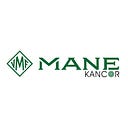Meeting the shelf life requirements of Meat
There is a growing imbalance in food supply and demand globally. Where certain markets are oversupplied and markets with overflowing demand are undersupplied. One of the outcomes of this
disparity is that food manufacturers and agri processors are faced with nearly 1/3rd of the food produced going to waste. This represents a huge cost burden to the industry, not to mention the environmental concerns surrounding this loss.
The meat industry is no stranger to this phenomenon. Over 50 million MT of meat is wasted per year during processing and storage. Furthermore, there is a growing protein deficiency in many of the Sub-Saharan countries. Thus one of the key recommendations made by FAO to producers has been to improve the storage and shelf-life of meat products.
Understanding the individual reasons that lead to spoilage and thus wastage in the meat industry; would be a prudent place to start solving this challenge. On the broad level, a meat product shelf-life can be broken down primarily into 3 factors –
Microbial Spoilage, a primary concern.
Microbial contamination is of course a major concern with respect to food safety. Contaminated food can cause sickness and even death in consumers and must be addressed with utmost care by food manufacturers. Many technologies have already evolved around this including hygiene best practices while slaughtering and processing and freezing to retard microbial colonies. Over and above this, many food manufacturers also use preservative techniques such as antimicrobial additives and spice extracts that are known to prevent the growth of microbes.
Taste, a key factor to high quality food.
Once food safety is addressed, the second concern turns to lipid oxidation and the oxidative stability of the meat. Meat is made up of visible fat and invisible fat. The invisible fat is present inside the connective tissue surrounding muscle fibres. In most store brought lean meats, all the ‘suet’ or visible fat is trimmed off. However, the invisible fat cannot be trimmed off or removed and remains within the meat. Rendering all types of meat and poultry susceptible to lipid oxidation.
The process of fat or lipid oxidation in meat is a series of chemical reactions that lead to change in chemical composition of the fat molecules, producing off-odour compounds such as malonaldehyde, which is also considered a carcinogen. And is responsible for unpalatable aromas and flavours, changing its functional and sensory characteristics.
Freshness and appeal, is all about the right shade of red
Oxidation is not limited to fats, even the meat colour oxidises and affects its’ shelf-life. The colour in fresh and cured meat is influenced by a compound called myoglobin, though its stability is different in each. Myoglobin is primarily a protein found in meat that helps store oxygen for aerobic metabolism in the meat muscles. But it also contains a non-protein portion which has an iron atom inside a porphyrin ring, the oxidation state of which dictate the colour of the meat. Therefore, colour of meat can vary from deep purplish-red in fresh cut or ground meat to light grey in faded cured meat. The science behind colour loss in meat is that when the meat surface is exposed to air, the oxygen reacts with the iron atom and binds to it forming oxymyoglobin which gives it the bright cherry red colour. Both myoglobin and oxymyoglobin are very susceptible to oxidation and can turn into an unappealing brown colour. There are many process factors that increase the rate of myoglobin oxidation in meat.
How does industrial processing affect the shelf-life of meat?
There are many factors that can accelerate the process of oxidation in meat, such as exposure to heat, light, presence of catalysts like oxygen, heavy metals like iron and processing conditions. Knowing the points of vulnerability will help decide how to preserve the quality of different types of meat products.
The meat industry has a long and complex value chains with many players at different levels from the breeding, feed and veterinary services and cattle rearing to the processing side of the business followed by distribution and retail sales. The processing side of the business is dominated by numerable large and small players at various levels from slaughterers to numerous value-addition processes and finished RTE manufacturers and packers. At each step of this process the meat is further exposed to spoilage and needs customized solutions to ensure that the meat that reaches the plate of the consumers is as fresh as possible.
In order to address these challenges, a dedicated team works to address the challenges that relate to meat shelf-life at each stage of processing. Kancor has introduced a series of shelf-life solutions called OxiKan, based on the finest rosemary herb that are specifically targeted at solving meat oxidation challenges.
